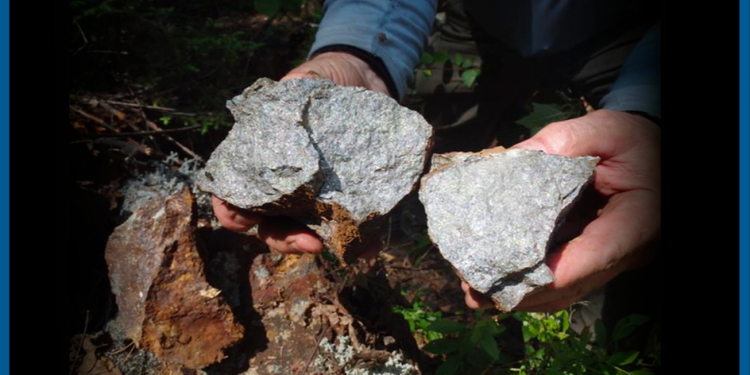Mink Ventures Corporation (TSXV: MINK) has received all assay results for a recently completed six hole, 507m drill programme at its Warren Nickel Copper Cobalt Project, located approximately 35km west of Timmins, Ontario.
The company has explained that the drilling has confirmed geophysical data and intersected broad zones of sulphide mineralization in all six holes with anomalous nickel, copper, and cobalt values associated with disseminated and net textured sulphides. Drill hole ‘W-24-01’ was drilled to a depth of 60m, and intersected 0.48% nickel (Ni), 0.12% copper (Cu), and 0.07% cobalt (Co) over 0.9m in semi massive sulphides typical of those found in the “A” Zone surface trenches.
Additionally, surface sampling on the project’s “A” Zone has shown that the best values to date are associated with massive to semi-massive sulphides. The company’s current interpretation is that the initial “A” Zone massive sulphide may have formed as a typical sulphide lens, then been broken apart by a later pulse of gabbro. This is based on several features seen in the drill core as well as the extent of massive and semi massive sulphides and Ni Cu Co values seen in the “A” Zone trenches. Further drilling is required to ascertain the extent of potential massive sulphide zones down plunge and along strike, as the “A” Zone has only been tested by very shallow drilling (65m vertical) over a short strike length. The “A” Zone geophysics suggests a strike length of approximately 700m.
“This initial drill programme enabled us to confirm our understanding of the geometry and geology of the “A” Zone, and fortuitously we clipped the edge of the “B” Zone in several holes, which enhanced our understanding of how the zones sit relative to one another. Given the extent of surface nickel, copper, cobalt mineralization on the property, over seven historical mineralized zones, with significant untested strike lengths, the data is compelling, and more drilling is warranted,” said Natasha Dixon, president and CEO.
The Warren project contains numerous historical, trenched surface zones, with significant Cu and Ni values which are associated with coincident geophysical responses including magnetics, electromagnetic (EM) and induced polarization (IP) anomalies over long strike lengths. The majority of these occurrences have had little or no drilling. Currently, it is thought that the “Shaft Area”, along with the “D” Zone, and “SW” Zone are extensions of the “C” Zone. This system has had very minimal exploration along a strike length of approximately 1.5km from geophysical data. Mink plans to evaluate a number of these high priority zones to outline a follow up drill programme. The initial prospecting work will be conducted in the early spring/summer to prioritize targets for future drill testing in 2024.
“We look forward to continuing the exploration work at Warren and remain grateful that half of the cost of this initial drill programme was offset with the non-dilutive capital provided through the OJEP grant.” Added Natasha.
To read more about this, please visit www.minkventures.com
To read more news like this, please visit www.theassay.com/news












